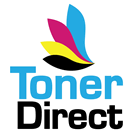www.tonerdirect.co.nz answers
Comparing Print Technologies for the Finest Results
In the realm of home and office printing, the debate between ink and toner is both longstanding and nuanced. At the heart of this debate lies a fundamental question: Is ink better than toner in terms of print quality? To answer this, one must first understand the differences between inkjet and laser printing technologies, the variables that define print quality, and the specific needs of the end user. This article delves into the mechanics of ink and toner, compares their capabilities across several parameters, and explores which is superior when the ultimate goal is pristine, professional-quality output.
Ink and toner are the respective cornerstones of two dominant printing technologies: inkjet and laser printing. Each operates on different principles and offers unique advantages and drawbacks.
The method of application, the type of paper, and even environmental conditions can all affect the final output—making the comparison between ink and toner far from straightforward.
Before declaring a winner, it is vital to define what is meant by “print quality.” This encompasses:
With these criteria in mind, let’s examine how ink and toner each perform.
Inkjet printers have long been favoured for high-quality photo printing and vivid colour reproduction. Their strengths include:
However, inkjets do have drawbacks. Ink can bleed on low-quality paper, resulting in less crisp text and images. The prints are also more susceptible to smudging if touched before drying and may fade or run if exposed to moisture.
Laser printers, powered by toner, have earned their reputation for speed, efficiency, and sharp text. Their key advantages include:
On the other hand, laser printers traditionally lag behind inkjets in colour depth and photo realism. Standard office lasers, which use four-color (CMYK) toner cartridges, tend to produce flatter, less nuanced colours and can struggle with subtle gradients or complex images.
To address whether ink is “better” than toner in print quality, it’s important to recognize the context and type of content being printed.
For black-and-white text, laser printers with toner are generally superior. The definition and clarity of toner produce crisp, professional documents with no risk of ink bleeding or smudging. If your focus is sharpness and legibility for business or academic work, toner is typically the better choice.
When printing colour-rich images, especially photographs or graphics with intricate shading, inkjet printers have the edge. Their ability to lay down micro-droplets and blend colours leads to more vibrant, true-to-life reproductions, with smoother transitions and finer detail. For artists, designers, or photo enthusiasts, ink delivers the most visually satisfying results.
Inkjet printers adapt to a broader variety of media types and finishes, offering glossy, matte, and specialty options. Laser printers are more limited; some glossy or textured papers may not withstand the heat of the fusing process, and toner may not adhere evenly.
Toner-based prints resist smudging and fading far better than standard dye-based inks. Pigment-based inkjet prints, often used in professional photo applications, can rival or even exceed toner’s longevity when paired with archival-quality paper.
The gap between ink and toner print quality continues to narrow, thanks to technological advancements:
Print quality is only one element in the broader decision between ink and toner. Considerations such as cost per page, frequency of use, and environmental impact may influence your choice:
The verdict on whether ink is better than toner for print quality depends on your specific needs:
Ultimately, “better” is subjective and hinges on your intended application. For home users printing vacation photos, an inkjet printer is hard to beat. For businesses producing contracts, reports, and correspondence, laser printers stand supreme. As both technologies advance, the differences blur—but understanding their strengths ensures you’ll choose the right tool for the job, every time.
You can get all Genuine and Premium Compatible Inks and Toners at www.tonerdirect.co.nz
Symone Sutherland-MacLeod left the following comment: "thanks - very helpful & efficient"
Jan left the following comment: "Excellent customer service and prices."
Jai Ghazizada left the following comment: "Rose was fantastic! Thank you
Sue left the following comment: made it easy to find what I wanted details on.... thanks
-----------------
Sean left the following comment: Rose Anne was great to deal with.
-----------------
Toner Direct
PO Box 301-065
Albany
Auckland 0752
"Returns are not Accepted to the PO Box"
Be sure to obtain an RA Number.
Freephone: 0800 855 966
E-Mail: info@tonerdirect.co.nz

